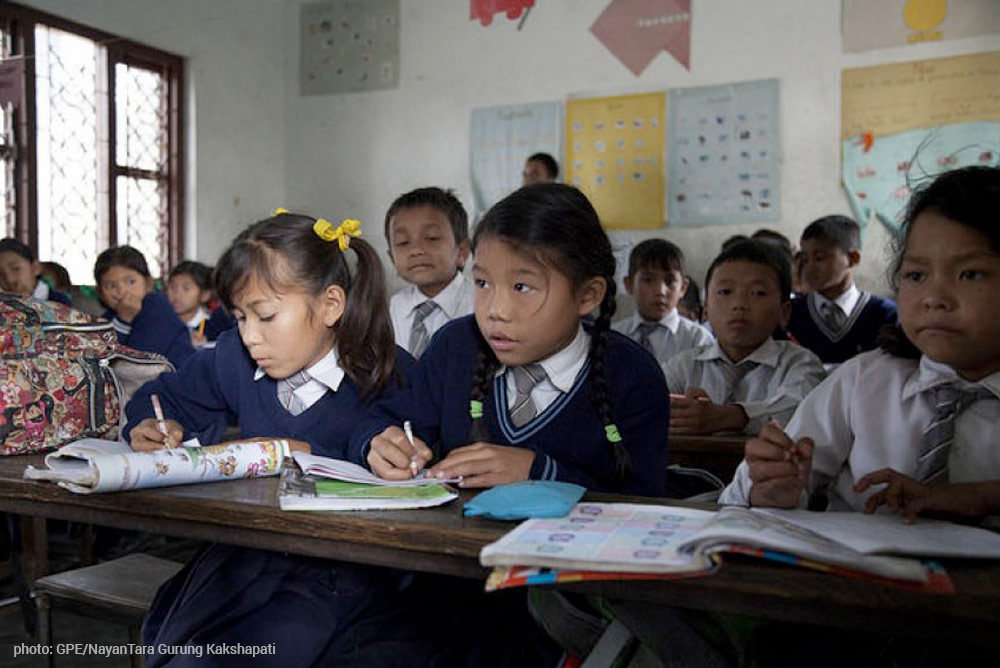By Commission Directors Liesbet Steer and Justin van Fleet. This blog was originally published on the GPE Education for All blog.
Nelson Mandela once said: “There can be no keener revelation of a society’s soul than the way in which it treats its children.”
Society has a moral responsibility to invest in its children, and the most powerful investment a society can make is in the education of the next generation. While the moral call for education, enshrined in the Universal Declaration of Human Rights, should be enough to put investment in learning at the center of the international development efforts, the broader investment case is just as convincing. There are many rational arguments – ranging from employment and economic growth to security and reductions in inequality – which underpin education’s centrality to the achievement of all the Sustainable Development Goals (SDGs).
Launched in 2016, the Education Commission’s Learning Generation report set out an investment and reform roadmap to deliver on the promise of education through four transformations: improving the performance of education systems, innovating to deliver results, including every child, particularly the most marginalized, and prioritizing financing.
Yet even if countries do all they can, many of them cannot achieve the Learning Generation alone. Domestic action must be met with much stronger support from the international community.
We believe that 2018 will be a tipping point for global education when international actors come forward to pioneer a new commitment to equipping the next generation with the skills, knowledge and attitudes needed to create a better future for all of us. And this critical action starts with a successful replenishment of the Global Partnership for Education (GPE) to kick off the year.
Starting 2018 strong
In the wake of international aid for education falling for six consecutive years, the Commission’s investment case underscores why the international community must take its investment in education more seriously – and the extreme consequences that will result if it does not.
But more importantly, it highlights how the international community can help make the Learning Generation a reality. In Senegal next February, world leaders will have the opportunity to pledge support to GPE’s crucial work. We must all stand behind the replenishment target of US$3.1 billion, aligned with the Commission’s recommendations to grow the GPE to US$2 billion a year by 2020, more than tripling its current size. Meeting this goal would equip GPE to reach 89 countries, home to 870 million children and youth.
Since it was established 15 years ago, GPE has helped millions of children – and the countries in which they live – realize their full potential. The partnership has grown, learned, and evolved, developing a new strategy and financing framework with an increased focus on results, leveraging innovation, and promoting knowledge exchange.
The Commission’s report showed that low-income countries in particular can only marshal a fraction of their budgetary needs for education. This makes the GPE partnership approach – combining country ownership with grant financing – absolutely critical for the poorest countries.
Writing in Project Syndicate, Malawi’s President Arthur Peter Mutharika noted that despite increasing education’s share of Malawi’s national budget from 12.5% in 2010 to 21% in 2015, “there is a limit to what economically struggling countries like Malawi can do alone.” He went on to conclude, “To make real progress in education, the generous support of wealthier partner countries and global institutions is essential.” Domestic momentum can only be sustained through dedicated international action.
Recent events also bring to light the power and potential of international cooperation toward a common goal. This past July, leaders at the G20 Summit in Hamburg, Germany acknowledged their support for GPE, while also recognizing the value of the Education Cannot Wait Fund and the proposed International Finance Facility for Education to bring the needed additional resources to the sector.
Working as a system, these three initiatives complement one another to deliver comprehensive international assistance to countries committed to investment and reform. Building on the strong GPE financing available to the poorest countries, the Education Cannot Wait fund provides resources for education in the immediate time of conflict and emergency. The proposed International Finance Facility for Education will in turn provide longer-term low-interest loan financing through the Multilateral Development Banks for lower-middle-income countries, complementing the strong sector planning and stakeholder engagement made available by GPE.
Creating a transformation
A donor’s investment in GPE reflects, without doubt, a strong commitment to achieving SDG 4. Some promising news just came from the European Commission, who has announced that it will provide 287.5 million euros to GPE for the 2018-2020 period.
It is a step in what can – and must – be an inflection point for the global community. As 2017 draws to a close and we look ahead towards the new year, we are filled with hope and inspired by the possibilities ahead on the road to achieving the global goals.
Let’s make a collective new year’s resolution to reveal the true nature of society’s soul by designating 2018 as the year we make education for the world’s children and youth priority number one.

